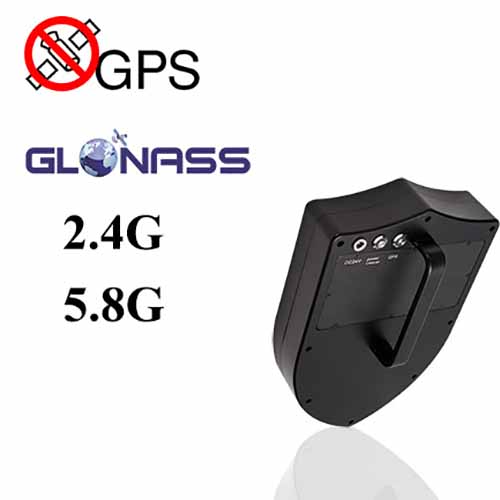In recent years, the drone industry has developed rapidly, and many civilian drones are quietly used in news, logistics, entertainment, energy, search and rescue, and other fields, becoming products for people to enjoy life, resulting in random flying and black flying. The problem will bring a lot of inconvenience to individuals, society, and civil aviation. In response to this kind of chaos, the drone jammer is grandly launched, and it has become the master of prevention and control of drone black flying.
Overview of Drone Jammer
It is understood that due to the small size of UAVs, it can fly at low altitudes, and current civil aviation radars cannot detect low-altitude UAVs. In order to prevent it from affecting civil aviation aircraft, major airports use drone shields to shoot down drones using physical principles, but will not cause damage. At the same time, the drone UAV jammer system can selectively interfere with and suppress the GPS, remote control, and image transmission signals of the UAV through the jamming transmitter according to the different conditions of the scene, so as to interfere with the black flying of the UAV. The controller launched a fierce PK match. In this way, it occupies the active control power and reduces the situation of black flying. It is widely used in airports, individuals, companies, detention centers, and other fields to improve confidentiality and security and make black-flying drones make forced landings. So it's listed to attract the attention of customers.

At present, the anti-UAV jammer technology of various countries is mainly divided into three categories
1. Interference blocking, which is mainly realized by techniques such as signal interference and sound wave interference.
2. Direct destruction, including the use of laser weapons and the use of drones to counter drones.
3. Monitoring and control, which are mainly realized by hijacking radio control.
The second type of technology is mainly used in the military field. The following is a discussion of the first and third types of anti-drone technologies, and how to use information technology to counteract consumer drones.
At present, all civilian UAVs need to use radio technology to achieve positioning, remote control, image transmission, and other functions. Of course, some special-purpose UAVs can use methods such as terrain matching, image recognition, and high-precision inertial navigation to determine their position and complete tasks autonomously, but they have not yet been popularized in the civilian field. Since the drone must use radio technology, it is possible to interfere with the radio, so as to achieve the goal of losing control of the drone or turning back.

